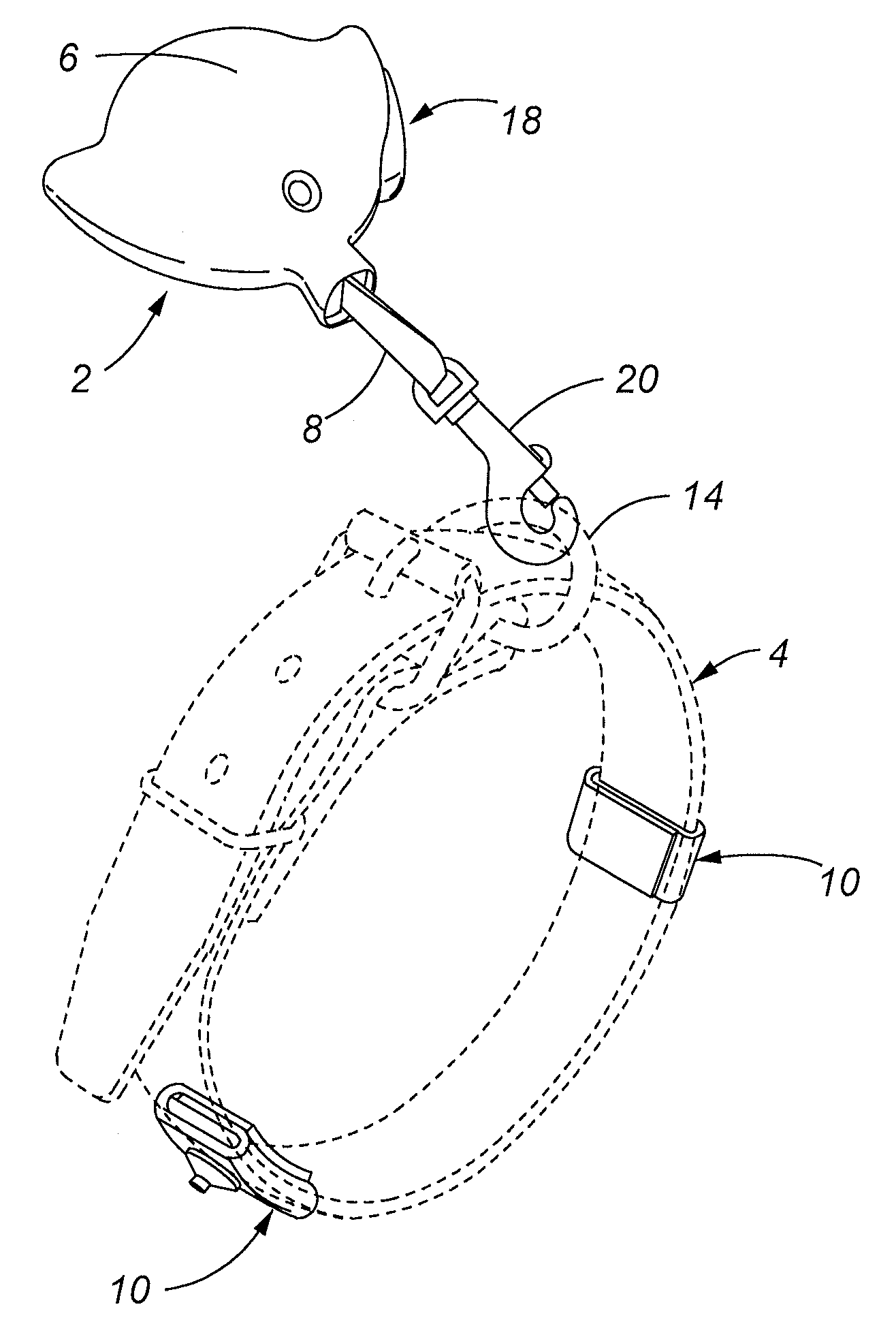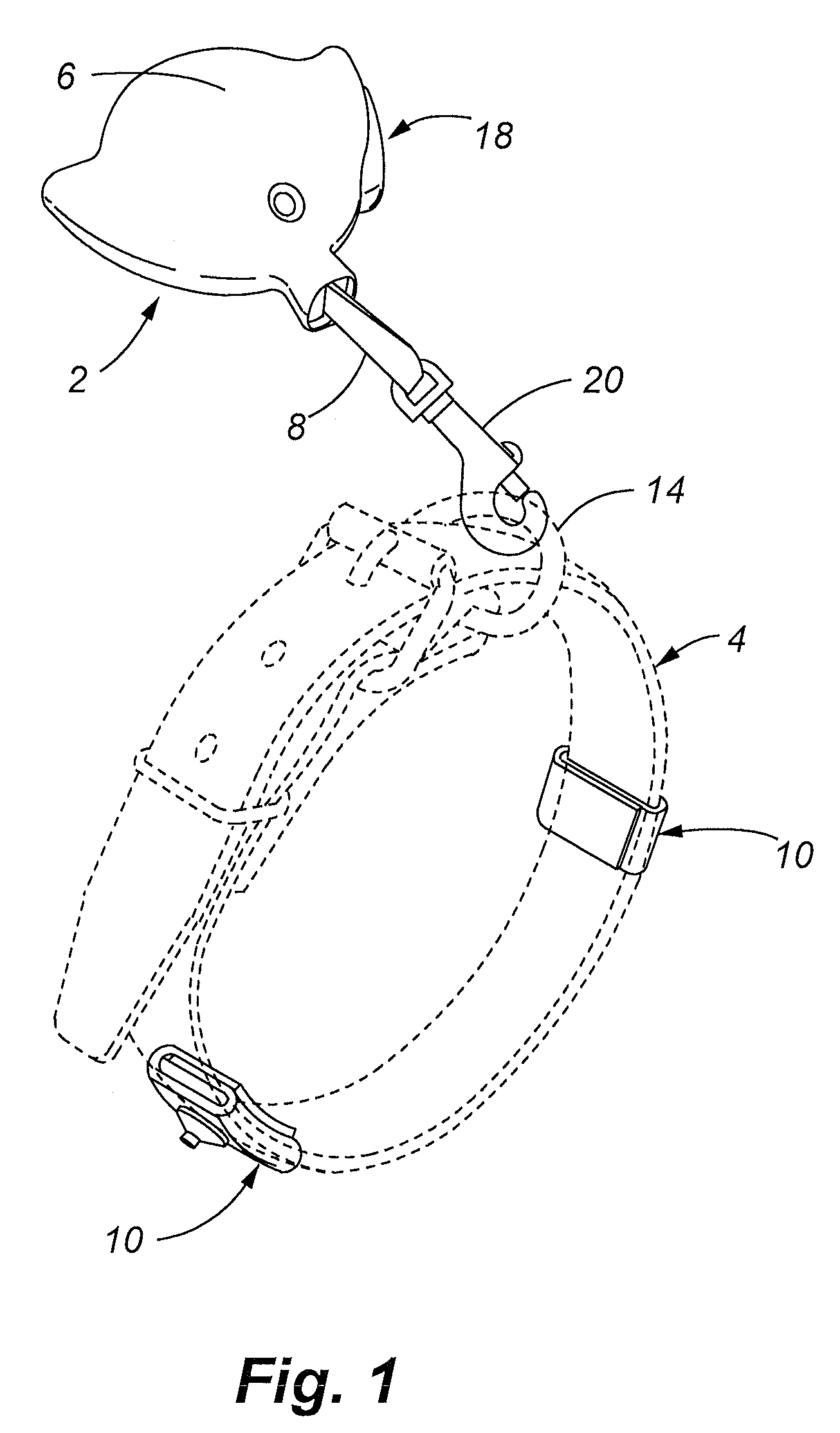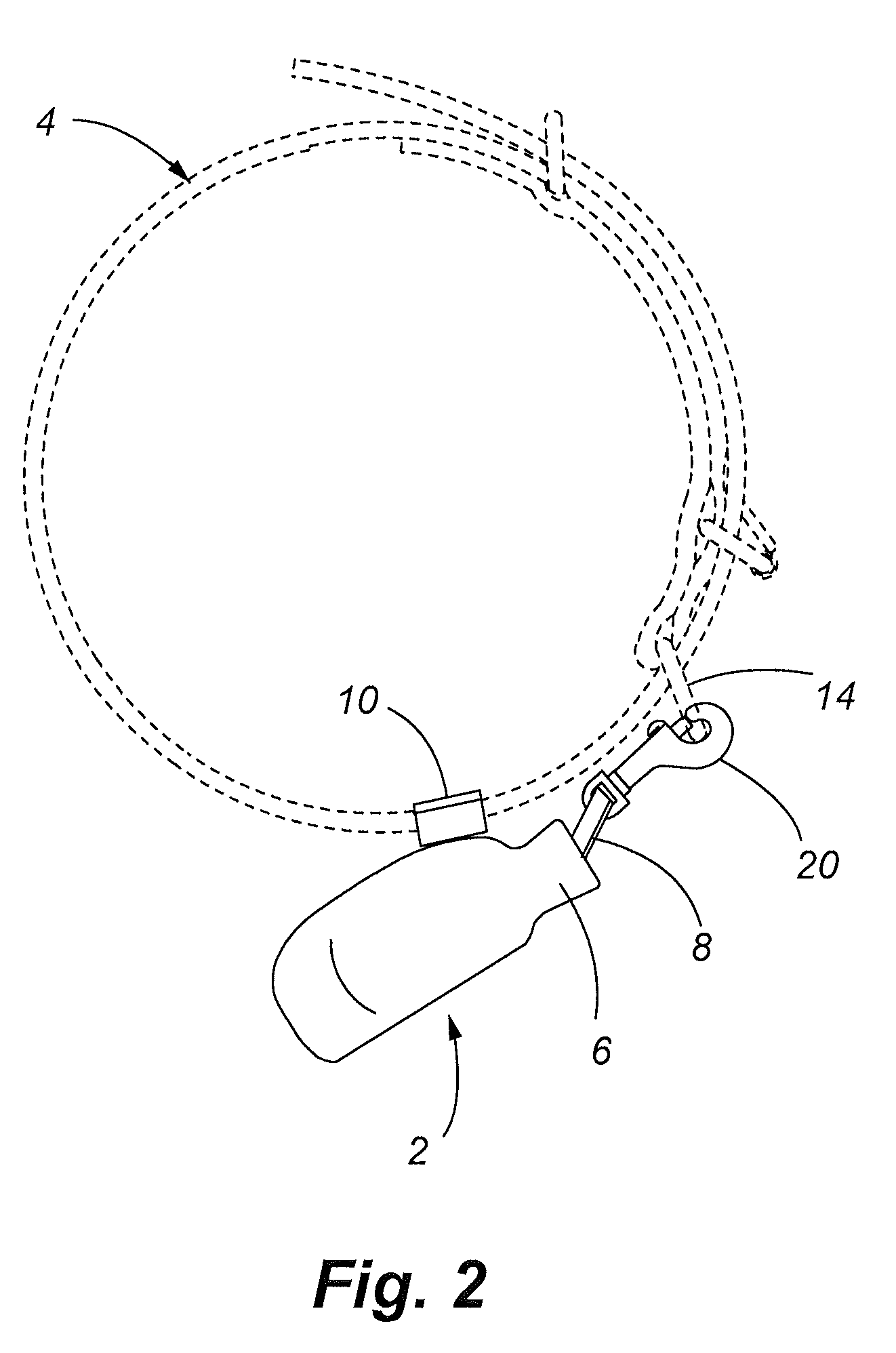Combination retractable leash assembly and wearable locket for companion pet
a technology of locket and leash, which is applied in the field of devices for restraining companion pets, can solve the problems of limiting the device of cohn to use with only relatively small animals, revealing no means of providing identification of the animal or its owner, and reducing the use of the device. , to achieve the effect of eliminating discomfort, increasing the weight and size of the leash assembly, and being convenient to us
- Summary
- Abstract
- Description
- Claims
- Application Information
AI Technical Summary
Benefits of technology
Problems solved by technology
Method used
Image
Examples
Embodiment Construction
[0039]As described in detail herein, various embodiments of the present disclosure comprise a leash assembly that is further comprised of a lightweight, small handle for housing a retractable leash, and also comprises identification means which may be conveniently worn about the collar or harness of the a companion pet similar to a dog tag or “locket,” but which does not interfere with the free movement of the companion pet when the leash is not in use. Another aspect of the present invention is to provide a leash assembly that may be connected at one point by a first attachment to a collar or harness, such as a buckle, for operating the leash in an extended position, and that also connects by a second attachment point on the collar or harness worn by the animal when the leash assembly may be worn by the animal and when the leash assembly is not in an extended position. Yet another aspect of the present invention is to provide a leash assembly which is smaller and less cumbersome to...
PUM
 Login to View More
Login to View More Abstract
Description
Claims
Application Information
 Login to View More
Login to View More - R&D
- Intellectual Property
- Life Sciences
- Materials
- Tech Scout
- Unparalleled Data Quality
- Higher Quality Content
- 60% Fewer Hallucinations
Browse by: Latest US Patents, China's latest patents, Technical Efficacy Thesaurus, Application Domain, Technology Topic, Popular Technical Reports.
© 2025 PatSnap. All rights reserved.Legal|Privacy policy|Modern Slavery Act Transparency Statement|Sitemap|About US| Contact US: help@patsnap.com



